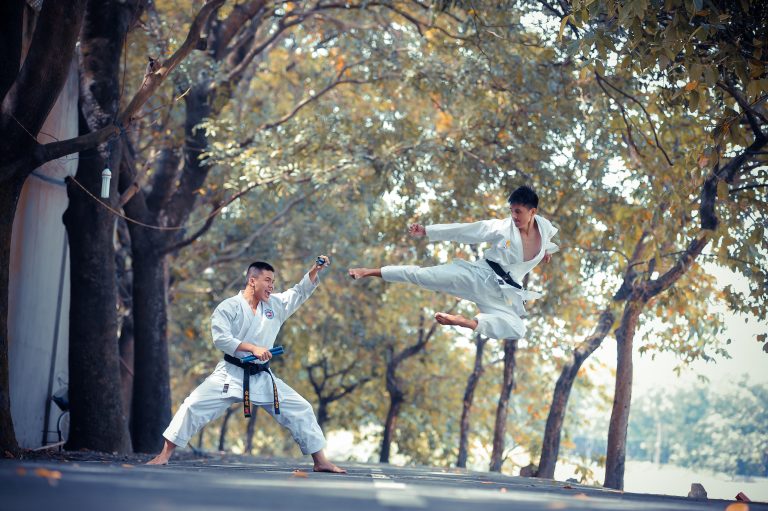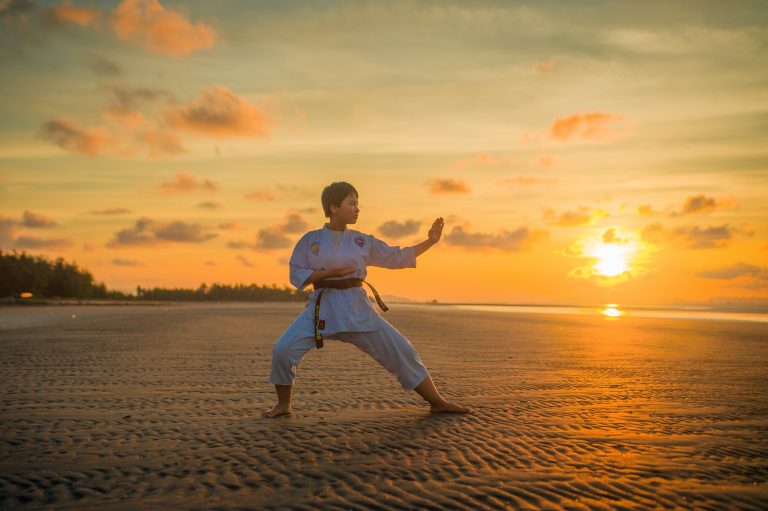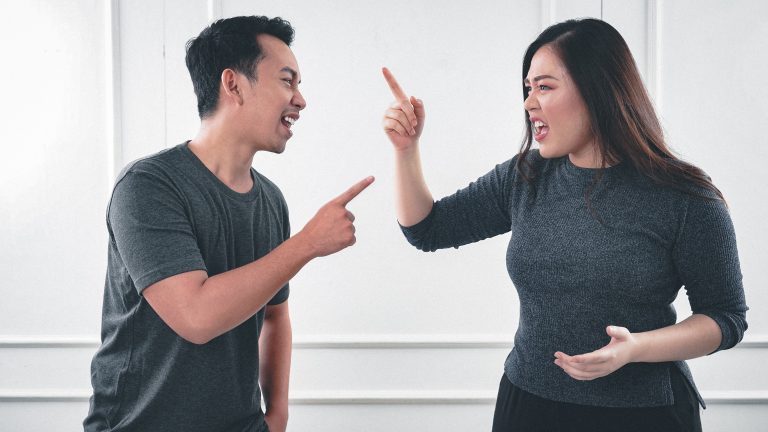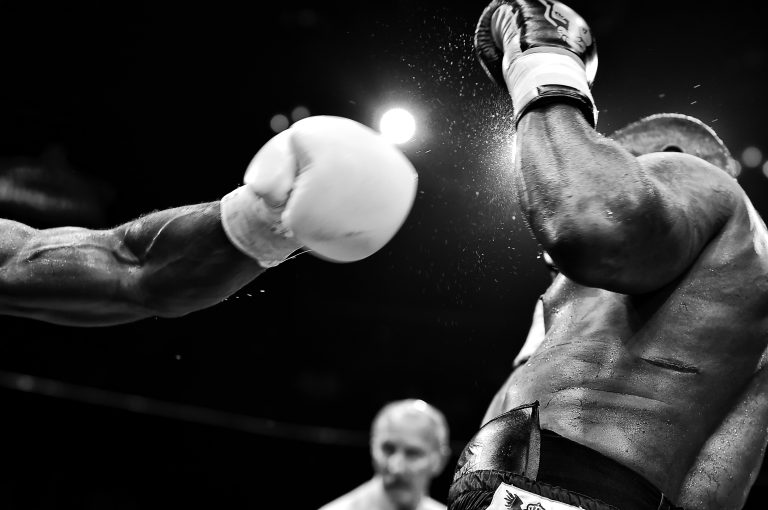Karate Kata Names and Meanings: Understanding the Art of Karate
Karate is a martial art that initially developed on the Ryukyu Islands in Japan. It is a form of self-defense that relies on using the body’s natural movements to strike, block, and grapple. One of the unique features of Karate is that it emphasizes the practice of forms or „kata,“ which are pre-arranged sequences of movements that simulate self-defense situations. In this blog post, we will explore the names and meanings of Karate kata, which can help understand and appreciate the art of Karate.
What is Karate Kata?
Karate kata or forms are a sequence of movements that represent a simulation of self-defense situations. Each of the moves in the kata is pre-arranged, with specific techniques used to strike, block and grapple. The kata represents a complete self-defense system, and it teaches practitioners how to defend themselves in various situations. Practicing kata enhances the skills of body control, rhythm, coordination, power, balance, and focus.
Karate Kata Names and Meanings
There are several kata in Karate, and each of them has a unique name and meaning. Here are some of the most commonly practiced kata in Karate:
1) Heian Shodan
Heian Shodan is a basic kata that is commonly practiced in Shotokan Karate. It is the first of the five Heian katas and is also one of the mandatory katas in karate competitions. The name Heian Shodan means „peaceful mind level one“ and is usually translated as „first step in the peaceful mind.“ The kata comprises 21 movements that aim to improve basic techniques such as stance, block, and punch.
2) Bassai Dai
Bassai Dai is a kata that is commonly practiced in Shotokan and Goju Ryu Karate. The term Bassai means „extract from a fortress,“ while Dai means „large.“ The name implies the use of powerful techniques to penetrate a fortress. The kata teaches a combination of blocks, strikes, kicks, and throws, and there are 42 movements in Bassai Dai.
3) Naihanchi
Naihanchi is a kata that is commonly practiced in Shito Ryu and Goju Ryu Karate. Naihanchi means „internal divided conflict,“ and the kata comprises of 35 movements that consist of rapid-fire punches and kicks. The kata focuses on developing the lower body’s muscles and balance.
4) Tekki Shodan
Tekki Shodan is a kata that originates from Okinawa and is commonly practiced in Shotokan, Wado Ryu, and Shito Ryu Karate. The term Tekki means „horse riding“ and Shodan implies „first level.“ The kata comprises of slow and explosive movements, with a focus on deep and stable stances, which are essential for Karate techniques.
5) Jion
Jion is a kata that is commonly practiced in Shotokan Karate. It originated in China and was later introduced to Okinawa. The name Jion means „temple sound,“ which refers to the sound of temple bells. The kata comprises of slow and fast movements and teaches a combination of strikes, kicks, and grappling techniques.
6) Gojushiho
Gojushiho is a kata that originates from Okinawa and is commonly practiced in Shotokan, Shito Ryu, and Goju Ryu Karate. The term Gojushiho means „54 steps,“ referring to the 54 moves in the kata. Gojushiho is a difficult kata, and it consists of a wide range of techniques, including kicks, strikes, grabs, throws, and jumps.
Frequently Asked Questions about Karate Kata Names and Meanings
Karate is a martial art that originated in Okinawa, Japan, and has become popular worldwide. One of the essential elements of karate is the practice of kata, a predefined sequence of movements that simulates a self-defense situation. Each kata has a name that is specific to its movements and meaning. In this blog post, we will address some of the most frequently asked questions about karate kata names and meanings.
What is kata in Karate?
Kata is a predefined sequence of movements that simulates a self-defense situation. It is a vital part of karate training as it helps practitioners develop correct posture, improve technique, and perfect their movements. Each kata has a specific meaning and can be used to convey particular martial arts principles.
What is the significance of the names of Karate Kata?
The names of karate kata are significant as they provide insight into the theme of the movements and the principles that they represent. For example, the name „Heian Shodan“ translates to „peaceful mind first level,“ which indicates that the kata teaches the importance of a peaceful mindset in self-defense situations.
What do the names of Karate Kata mean?
The names of karate kata have both literal and symbolic meanings. The literal meaning is a translation of the Japanese characters into English, while the symbolic meaning is the deeper significance behind the name. For example, the name „Bassai-Dai“ translates to „to storm a fortress big,“ which represents the movements of the kata and the concepts of power and strength.
What is the history behind the names of Karate Kata?
The history behind the names of karate kata is steeped in tradition and legend. Many of the kata names were passed down from master to student and have been used for generations. Some of the names have historical significance, such as the kata „Nijushiho,“ which was named after the 24 Chinese constellations and reflects the influence of Chinese martial arts on Okinawan karate.
Are Karate Kata names the same across all styles of Karate?
The names of karate kata can differ across different styles of karate. For example, the Shotokan style uses different names for some kata compared to the Goju-Ryu style. However, the movements and principles taught in each kata are generally similar, despite the differences in the names.
How can I remember the names of Karate Kata?
Remembering the names of karate kata can be challenging as they are often in Japanese and can be difficult to pronounce. However, repetition is an essential part of learning karate, and the more you practice the kata, the more familiar the names will become. Breaking down the kata name character by character and understanding its literal and symbolic meaning can also help with memorization.
What is the best way to learn Karate Kata?
The best way to learn karate kata is through regular practice and guidance from a qualified instructor. It is essential to understand the individual movements, their purpose, and the principles behind the kata. Breaking down the kata into smaller sections and practicing each section repeatedly can also help with learning and perfecting the movements.
What is the significance of the number of movements in a Karate Kata?
The number of movements in a karate kata varies from kata to kata, with some having as few as 16 movements and others having over 100. The number of movements is not as important as the principles that the kata teaches. However, some katas with a higher number of movements may represent a more advanced level of difficulty.
In conclusion, the names and meanings of karate kata are significant in understanding the purpose and principles behind each kata. While it may be challenging to remember the names of each kata, regular practice and guidance from a qualified instructor can help. By understanding the significance of each kata, practitioners can improve their technique, develop their martial arts skills and appreciate the rich history and tradition behind karate.
How to Understand and Learn Karate Kata Names and Meanings
If you’re someone who is interested in learning karate, or you’re already enrolled in a class, one important element of your training will be learning kata. Kata is a sequence of movements and techniques that are practiced, often solo, and are designed to help students improve their stance, balance, and form. Understanding the names and meanings of different kata can help you better understand the history, philosophy, and underlying principles of karate.
In this guide, we’ll cover some key steps to help you learn and understand karate kata names and meanings.
Step 1: Learn the history and philosophy of karate
Before diving into the specific kata and their names and meanings, it’s important to have a foundational understanding of the history and philosophy of karate. Karate originated in Okinawa, Japan, and was influenced by Chinese martial arts. It was developed as a form of self-defense, and its early practitioners emphasized the importance of physical and mental discipline, humility, and respect for others.
By learning more about the history and philosophy of karate, you can gain a deeper appreciation for the art, and better understand the meanings behind the kata movements.
Step 2: Study the basic kata movements
Once you have a foundational understanding of karate and its history and philosophy, it’s time to start studying the specific kata movements. Begin with the basic kata movements, which are typically easier to learn and are foundational for more complex kata.
Some common basic kata movements include:
– Stances (e.g., front stance, back stance, horse stance)
– Strikes (e.g., punch, knife hand strike, elbow strike)
– Blocks (e.g., inside block, outside block)
– Kicks (e.g., front kick, side kick)
As you practice these basic kata movements, pay attention to the form and technique, and think about how each movement might be applied in a self-defense scenario.
Step 3: Learn and remember the names of each kata
Once you’re familiar with the basic kata movements, it’s time to learn the names of each kata. Start with the most common kata, such as Heian Shodan or Taikyoku Shodan.
One effective way to learn and remember the names of the kata is to break them down into smaller parts. For example, the name Heian Shodan can be broken down into „Heian“ (meaning „peaceful mind“ or „calmness“) and „Shodan“ (meaning „first level“ or „beginner level“).
As you practice each kata, repeat the name of the kata out loud to help reinforce it in your memory.
Step 4: Understand the meanings behind each kata
Finally, it’s important to understand the meanings behind each kata. Each kata has its own unique history and purpose, which can be reflected in its movements and techniques.
For example, the Heian kata series was developed by Master Funakoshi Gichin as a way to introduce karate to school children in Japan. Each Heian kata includes movements that build upon the previous kata, and they are designed to help students develop both physical and mental discipline.
To fully understand the meanings behind each kata, it can be helpful to research the history of each kata and read about the interpretations of different karate masters and practitioners.
Conclusion
Learning and understanding karate kata is an important part of your training as a karate student. By taking the time to study the history and philosophy of karate, learn the basic kata movements, remember the names of each kata, and understand the meanings behind the kata, you can deepen your knowledge and appreciation for this ancient martial art.
Inhaltsverzeichnis






